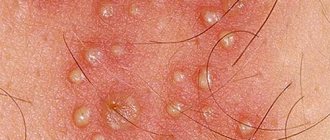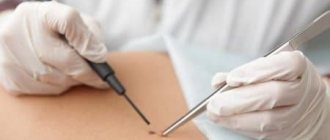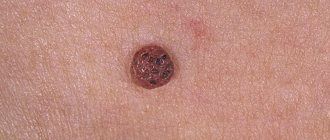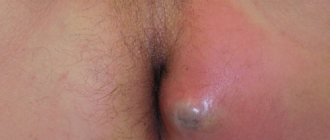Definition
An infectious disease can be transmitted through air, water, food, or through contact with a sick person, and transmission from mother to child is also possible. The main criterion for infection is the pathogen.
Vitiligo is not an infectious pathology that spreads through contact with infected people. Vitiligo is caused by partial disturbances in the metabolism of melanin in the skin caused by changes in discoloration. There is no source of infection, so the condition is not infectious.
The skin does not have its characteristic color because it has lost its melanin. For some reason, the pigment-forming cells known as melanocytes are destroyed. There are a lot of these reasons. Although vitiligo affects all races equally, dark-skinned people are more susceptible to the disease.
Typically affects body folds (such as the armpits), places that have been injured in the past, and areas exposed to the sun, around moles or around the anus and labia. It can also affect the eyelids and hair.
This pathology refers to a kind of polygenic hereditary disease. But inheritance is just one factor that causes vitiligo. As a rule, lifestyle and environment also influence the development of pathology.
There are many factors that cause vitiligo: stress, trauma, surgery, long-term short-wave ultraviolet radiation, various ionization radiation, certain chemicals, stimulation, allergies and other skin diseases such as psoriasis. Some liver diseases, especially thyroid diseases and malnutrition, etc.
In fact, vitiligo is associated with inheritance. It is possible that if parents are sick with this pathology, then their children will also get sick. According to research, if parents have this condition, the chance of their children getting the disease is about 3-7%.
After several years of research, scientists have confirmed that vitiligo is an autoimmune disease. The immune system damages its own pigment cells, causing a local decline in pigment cells and decline in function.
Vitiligo in intimate places
Skin diseases are quite diverse. It is important to know how each pathology differs so that you can promptly seek help from a medical institution. Rare diseases include vitiligo in intimate places. The disease can be called leukoderma otherwise.
Description of the pathology
Vitiligo rarely appears on the genitals. The pathology is characterized by the fact that there is a deficiency of melanin or its complete absence. Initially, pathological areas on the skin are pink, after which they turn white. Representatives of dark skin suffer especially often. But of course we cannot say that people with fair skin cannot suffer.
Leukoderma or vitiligo is a chronic disease; during its development, symptoms may appear and then disappear again. The pathology can progress gradually, the spots at this moment rapidly increase in size and can spread to other parts of the body. Vitiligo on the genitals is not a dangerous disease and is not contagious. Those around him will not suffer from it.
However, people who are faced with a problem often have complexes, since their appearance is significantly different from others. In addition, many may perceive the pathology negatively, especially if the spots directly affect the genital organs themselves. Many people have problems in their intimate life.
Patients with leukoderma strive to get rid of the problem as soon as possible. But it is worth noting that it is not recommended to do this yourself, since in each specific case the treatment methods differ from each other. It is better to seek the help of a doctor and undergo full-fledged, traditional treatment.
Features of development and causes of occurrence
Vitiligo on the penis or vitiligo on the labia is formed in the same way as on any other part of the body. Doctors are of the opinion that this pathology has a genetic origin in combination with other provoking factors. The following can be included here:
- Hormonal imbalance – menopause, pregnancy, puberty.
- Nervous system disorders.
- Weakened immunity.
- Chronic diseases.
- Infectious diseases of the skin.
- Lack of vitamins and useful minerals in the body.
- Living together with a bad environment.
Vitiligo on the penis or vitiligo in the groin in men occurs because the production of melanin is disrupted. As a result, spots are formed that differ in color from healthy skin. Their color is white, over time the number can increase, they can grow in size. Sometimes you may notice that the spots disappear, but appear again after a while.
In addition to the main symptom, in which the skin becomes discolored, if there are other signs of the development of pathology, the following can be distinguished:
- In pathological areas, hair becomes discolored.
- Places lacking pigmentation do not respond to cold and heat.
- Feeling dry and itchy.
- Slight redness.
In this regard, vitiligo on the penis or labia can cause the development of an infectious disease. This can lead to a deterioration in well-being and the development of complexes. But instead of getting nervous and panicking, you need to seek help from a medical facility.
Vitiligo on penis photo
The development of vitiligo cannot be ignored, since pathological spots will become vulnerable to adverse effects, which is why inflammation and other diseases can develop.
There are no distinctive features in the development of vitiligo in women and men. The only difference is that the fair sex faces the problem more often than men. This is explained by the peculiarities of hormonal levels.
The disease is not considered contagious and dangerous. When it occurs, only the skin suffers; the functioning of internal organs and systems is not disrupted. Rather, on the contrary, disturbances in the functioning of organs can provoke the appearance of spots.
Treatment methods
Vitiligo on the scrotum or other part of the intimate parts must be removed by a doctor; treatment is selected individually in each specific case. It is not recommended to take any measures on your own, as many of them can be harmful. If you have vitiligo in the genital area, this is especially dangerous.
Such pathological areas are sensitive to negative effects; medications should not affect the functioning of the reproductive organs. There are many ways to even out your skin tone. In some cases, it is enough to simply “whiten” problem areas, in others it is necessary to increase pigment formation.
Melanin production can be stimulated surgically; melanocytes are transplanted from a donor or from the patient himself (from healthy areas) to problem areas. You can also use medications for this:
- Immunostimulants, for example, Immunal.
- Corticosteroids, such as Betamethasone.
- Photosensitizers.
- Vitamin complexes.
Medications for the treatment of vitiligo in the groin should be selected based on the reasons that caused them, the characteristics of the pathology, the patient’s age, etc.
To achieve a positive result, treatment must be comprehensive. The use of traditional medicine methods is allowed. However, you should consult a doctor about them, and use only proven medications.
Penile vitiligo photo
Causes
Vitiligo is a common skin disease in India, the Middle East, and also South Africa. It has a major impact on people's lives, on social work and on quality of life.
Vitiligo is a skin condition characterized by white patches. Factors that can cause the disease:
- Long-term contact with the allergen. There are many allergens that can lead to pathological changes in the skin, such as ivy, oak, all kinds of detergents for cleaning kitchens or baths.
- Long-term use of certain drugs. Based on the research, many patients have experience taking certain medications such as vitamins, antibiotics.
- Cosmetics. According to the study, women often use cosmetic products marketed for intimate hygiene. They can also cause white spots to appear, and pregnancy can make the condition worse. Therefore, women should pay more attention to what products they use.
- Skin diseases. Some skin diseases are associated with dissimulation or taking immunosuppressive therapy, such as systemic lupus erythematosus, diabetes, syphilis, tuberculosis, etc. This type of women has low immunity.
- Eating habits. This should also be taken into account. Some foods worsen the condition but do not cause vitiligo, so doctors strongly recommend following a certain diet for this disease.
The cause of vulvar vitiligo can also be predisposing factors such as chronic inflammation of the urogenital area, constant stress, diseases of internal organs, intoxication together with liver pathologies, destruction and physiological disorders of gland secretion, deficiency of copper, selenium and zinc ions.
Symptoms of vitiligo, photos, initial stage
It is generally accepted that the disease is classified into stages, of which there are several - in men, women and even infants.
- Progressive point: if the spot increases over a three-month period. This moment may be slow.
Symptoms of vitiligo, photos
Symptoms
The best time to treat all diseases is the early stage. But unfortunately, most patients do not recognize the disease at the initial stage due to a lack of knowledge. Therefore, if you have any symptoms that were not previously present, you should consult a doctor.
Skin damage is an early symptom of vitiligo. The disease does not cause itching or discomfort in the labia and vagina. Vitiligo on the genitals occurs in the same way as on other parts of the body.
Source: doloypsoriaz.ru
First, pigmentation appears on open areas of the body, and then reaches the intimate area.
The following symptoms of the disease can be identified:
- discoloration of hair on pale areas of the skin;
- white stripes on the labia minora and labia majora;
- lack of reaction to cold or heat from depigmented skin;
- possible peeling and inflammation;
- vitiligo is localized on the mammary glands, buttocks, and around the areolas of the nipples;
- at first the spots are pink, but differ from the shade of the skin;
- they are small in size, no more than 0.3 cm.
Vitiligo is not life-threatening, but it is a lifelong condition that cannot be cured. The primary symptom of vitiligo is the presence of white patches on the skin. They are flat and smooth, not convex.
What is the impact of the disease on the physiology and psychology of a woman? Why are people so afraid of vitiligo? The main reason is that the disease causes great damage to the physiology and psychology of a woman.
How the disease affects the psyche and physiology:
- A lack of melanin will weaken the skin's ability to protect the body from ultraviolet rays. Studies have shown that patients with vitiligo have a higher incidence of skin cancer than the average person.
- This condition can cause various diseases. Such as photosensitive dermatitis, pernicious anemia, pelada, psoriasis, rheumatoid arthritis, cataracts, hyperthyroidism.
The woman's psychological condition is deteriorating. This is due to the fact that a woman is embarrassed to undress in front of a man or wear a swimsuit to the beach. She also feels psychological discomfort at an appointment with a dermatologist or specialist who performs depilation of the intimate area.
Women with this disease are more likely to be nervous, become irritable and subconsciously hostile towards others. Some patients even think about suicide.
Patients with vitiligo not only have physiological damage, they also have a deteriorating mental state. Such women feel awkward in society and try to communicate less with people; they withdraw into themselves.
Vitiligo in intimate places: what to do and how to treat?
Skin diseases are quite diverse.
It is very important to understand what the features of each pathology are in order to seek help in a timely manner, since some seemingly harmless deviations can be dangerous. Rare skin pathologies include vitiligo (otherwise known as leukoderma). It is characterized by a deficiency of melanin, due to which some areas of the skin may lose their natural color.
These areas first look like pink spots, then the spots turn white, which is especially pronounced in those with dark skin.
Leukoderma is a chronic disease during which symptoms may disappear and return.
It is also possible for the disease to gradually progress, when the spots may increase in size and spread throughout the body. One of the types of pathology is vitiligo in intimate places.
In this case, discolored areas of skin are located in the genital area. This disease does not cause any particular problems - it is not contagious and rarely leads to complications.
However, people with vitiligo have complexes because their appearance is different from that of other people. In addition, some people tend to perceive vitiligo patients negatively, especially if the spots are located close to the genitals. This can affect the quality of the patients' intimate life and their attitude towards themselves.
Therefore, patients with leukoderma strive to eliminate this problem. However, you should not do this yourself, since the principle of therapy may differ in each specific case. It is best to take the help of a specialist. But before you see a doctor, you need to find out what this disease is characterized by and how it develops.
Features of the development and manifestations of pathology
Vitiligo in the genital area forms in the same way as in any other part of the body. According to doctors, this disease is caused by a genetic predisposition combined with exposure to unfavorable factors. These factors include:
- hormonal imbalance;
- problems with the nervous system;
- prolonged emotional stress;
- weakness of the immune system;
- chronic diseases;
- infectious skin diseases;
- lack of vitamins and minerals;
- harmful living and working conditions.
The initial stage of the disease is the occurrence of disturbances in the process of melanin production. As a result, small spots form on the skin in the genital area, the color of which differs from the color of the rest of the skin. Gradually, these spots turn white, their number increases, and they themselves grow. Sometimes they can disappear, and after some time they appear again.
In addition to the main symptom, which is the presence of discolored areas of the skin, other signs of this pathology can be identified. This:
- discoloration of hair on pale areas of the skin;
- lack of reactions from depigmented skin to heat and cold;
- dryness;
- itching;
- redness;
- inflammation;
- peeling.
Due to all these symptoms, vitiligo on a man's penis or on a woman's genitals can lead to the idea of a serious infectious disease. This can cause anxiety, which often affects your well-being. Instead of being nervous, you should seek help from a doctor who can find out if there are any health risks.
These signs cannot be ignored, since discolored skin becomes more vulnerable to adverse effects, which is why vitiligo can be complicated by infectious diseases or inflammatory processes.
There are almost no differences in the manifestation of the disease in men and women. The only difference is that females are more susceptible to this disease. This is explained by the peculiarities of the female hormonal system.
In general, this disease is not considered dangerous, since it negatively affects only the condition of the skin, but does not affect the functioning of internal organs. Rather, the work of internal organs can negatively affect the condition of the skin, causing this problem. Nevertheless, a certain danger still exists.
Discolored areas of skin often begin to peel and inflammation may occur in these areas, making the skin more sensitive to negative influences.
Therefore, vitiligo is often complicated by other skin diseases. Another danger is that there is a certain risk of discolored areas degenerating into a cancerous tumor.
Therefore, even in the absence of unpleasant sensations, it is worth periodically being examined by a doctor.
Therapeutic measures
Treatment is selected individually by the doctor after the examination has been completed. It is not advisable to take any measures on your own, since there is a possibility of harming your own body.
This is especially dangerous if you have vitiligo in the genital area.
These areas of the body are sensitive to adverse effects, so all medications used should not create additional problems with the reproductive organs.
Evening skin tone is done in different ways. In some cases it is easier to bleach healthy areas, in others it is to increase the level of pigment formation in the area of white spots.
Bleaching is done using bleaching agents (for example, MBEG ointment). Pigment production can be stimulated surgically by transplanting melanocytes from a donor or from healthy areas of the patient’s body.
Medications are also used for this:
- immunomodulators (Immunal);
- corticosteroids (Betamethasone);
- photosensitizers (Beroxan);
- glucocorticoids (Clobetasol);
- vitamins (Vitrum).
Drugs for treatment are selected taking into account the characteristics of the disease and its causes. Each of these remedies is capable of neutralizing a specific factor that provokes the development of the disease. Most often, complex treatment is prescribed using several drugs that act in different directions.
The use of traditional medicine is also allowed, but you should only use proven recipes and only when their use has been approved by a specialist. These medications must be combined with other means of influence - only in this case will it be possible to achieve the necessary results.
A very important aspect of treatment is diet. Thanks to a properly organized diet, you can supply the body with the necessary nutrients and microelements, which is also important for getting rid of vitiligo. The fact is that a deficiency of necessary substances is one of the reasons that lead to the development of leukoderma.
The effectiveness of treatment depends on many aspects. It is influenced by the characteristics of the actions taken, the patient’s compliance with the doctor’s recommendations, the severity of symptoms, the form of the disease, etc. There are many cases where this problem could be eliminated. But sometimes all measures turn out to be useless.
Loading…
Source: https://DoloyPsoriaz.ru/pigmentnye-pyatna/vidy/vitiligo-na-polovyx-organax.html
Diagnostics
There are various reasons that cause depigmentation of the female vagina. Relevant data show that many of the diseases originate in this part of the female body.
But vitiligo does not always start from the labia. This pathology can start from the neck, arms or legs, everything is purely individual. If women have only vitiligo on the labia and vagina without other inflammations, this kind of white spots does not need to be treated.
There are other diseases that can cause white spots to form:
Lichen sclerosus. This disease is chronic. At the beginning, a woman may see a white, hard papule with a waxy sheen that is slightly higher than normal skin, representing the size of a needle. As the disease progresses, the skin and subcutaneous fatty tissue may gradually atrophy, the lips become dry, the clitoris narrows, and the skin becomes white and thin. When the condition is untreated and continues to progress, the skin is thin, like parchment or cigarette paper, and patients will feel itchy.
Female leukoderma is also considered a precancerous lesion. Often found in postmenopausal women. This type of white spots does not completely discolor and is characterized by a thickening of the gray, rough surface, a feeling of infiltration, and stripes on the labia. They are also irregularly shaped and often form inside the labia. It can also occur in the clitoral or vaginal mucosa.
Dermatitis and neurodermatitis. It mainly occurs on the lips of the labia minora and labia majora, and often spreads around the anus. Due to long duration, repeated attacks, itching, rubbing, burning, the skin texture will thicken. The color may be gray or white, which is similar to vitiligo.
These diseases should be taken into account in differential diagnosis. Sometimes vitiligo can be easily confused with another pathology.
Vulvar leukoplakia: modern treatment methods
The periods of menopause and menopause are always associated with hormonal changes in a woman’s body and are often complicated by the appearance of various unpleasant symptoms and diseases.
One of these gynecological ailments related to precancerous conditions is vulvar leukoplakia.
At first, this disease can be completely asymptomatic, and in the absence of timely treatment, it can lead to the development of an oncological process.
Leukoplakia of the vulva (or lichen sclerosus) is a dystrophic disease of the vulva with manifestations of squamous hyperplasia of the stratified squamous epithelium lining the vulva.
With this disease, the appearance of normally absent horny and granular layers in the tissues of the vulva is observed, which leads to the development of acanthosis, para- and hyperkeratosis.
This disease can be combined with kraurosis of the vulva, and such clinical cases have been increasingly observed in the practice of gynecologists in recent years.
With leukoplakia of the vulva, malignancy of cells and the development of vulvar cancer is observed in 13-30% of patients, and when combined with kraurosis, the risk of a cancerous tumor increases. Unfortunately, doctors also note the fact that this gynecological disease is becoming “younger” and is increasingly being detected in young women.
In this article we will introduce you to the causes, symptoms, methods of diagnosis, treatment and prevention of vulvar leukoplakia. This information will allow you to start treatment on time and prevent the development of severe complications.
Causes
While modern medicine cannot give an exact answer about the cause of the development of vulvar leukoplakia in each specific clinical case, doctors are well aware of the factors that can lead to changes in the cellular composition of the vulvar epithelium. These include:
All these factors become especially dangerous after the age of 40 or during menopause.
Psychiatrists consider leukoplakia as a psychosomatic disease, which is provoked by a whole complex of psycho-emotional disorders and can be corrected by changing the way of thinking.
As a rule, women with this diagnosis experience constant dissatisfaction with themselves and the actions of the people around them, place increased demands on themselves and deep distrust of their loved ones and relatives.
Much less commonly, vulvar leukoplakia develops in childhood. However, all of the above factors can cause changes in the vulvar mucosa in girls. That is why regular preventive examinations at this age become important, and when the first signs of the disease appear, you should immediately consult a doctor.
Symptoms
Sometimes vulvar leukoplakia is asymptomatic for a long time and women learn about its development during a routine or preventive examination with a gynecologist. Pathology can be detected accidentally during examination of the clitoris and labia minora. Small, usually multiple, whitish spots appear on their mucous membrane.
Over time, they thicken, become keratinized, slightly rise above the surface of the mucosa and acquire a gray-white color with a pearlescent tint. Foci of changed mucosa can increase in size, merge and spread to a significant surface of the vulva.
Patients often experience paresthesia in the form of numbness or tingling in the keratosis area.
When areas of leukoplakia are infected or sclerosed, a woman may notice the sudden appearance of swelling and complain of dryness, tension and tightening of the mucous membrane and skin in the genital area, intense itching, which intensifies at night or with movement, sexual intercourse and urination. Prolonged itching of the vulva leads to psycho-emotional disorders, exhaustion of the nervous system and loss of ability to work.
Multiple subepithelial hemorrhages may appear in areas of leukoplakia. In the later stages of the disease, hyperkeratosis and sclerosis reach their maximum.
The mucous membranes become rigid, folded, and glossy-pearl in color. Telangiectasias and subepithelial hemorrhages appear on their surface.
The labia majora become like thickened ridges, the labia minora are almost not defined, and the entrance to the vagina becomes sharply narrowed.
Classification of forms of leukoplakia
According to the severity of hyperkeratosis, leukoplakia can be:
- Flat. Flat whitish spots appear on the vulva without signs of inflammation. After removal with a tampon, they appear again. The spots may be present in limited areas of the vulva, and with a generalized course they cover a large surface of the mucous membrane.
- Hypertrophic. Foci of changes in the mucous membrane look like gray-white spots with clearly defined contours; they rise above the surface and sometimes merge with each other and cannot be removed with a swab.
- Warty. The lesions are significant and have the appearance of warty growths. They may be complicated by ulcerations, inflammation, swelling and the appearance of redness, ulcers, cracks and erosions. This form of leukoplakia is considered a precancerous condition.
Leukoplakia of the vulva and pregnancy
In some cases, vulvar leukoplakia can develop during pregnancy.
With the help of timely and well-prescribed drug therapy, it is usually possible to achieve a stable condition without progression of symptoms during gestation and in the early postpartum period.
In such cases, women are advised to give birth naturally. In the presence of severe dryness, thinning, the presence of long-healing ulcerations, cracks and extensive foci of leukoplakia, a cesarean section is recommended for delivery.
Diagnostics
To establish a diagnosis, patients are prescribed the following types of examination:
- medical history and gynecological examination;
- general blood analysis;
- smear on flora from the urethra, vagina and cervix;
- PCR analysis for the presence of human papillomavirus to determine the type of virus;
- biopsy and histological examination;
- cytological examination of scrapings from the cervix and cervical canal for atypical cells;
- vulvoscopy (simple and advanced using dyes);
- colposcopy;
- aspiration of the contents of the uterine cavity and/or cervical canal followed by histological examination of the material;
- immunogram.
In the early stages of vulvar leukoplakia, differential diagnosis of this disease with diseases such as:
- neurodermatitis - itching also appears in other parts of the body, the epithelium is compacted, dry and thickened, the skin is reddened, with inflamed papules of a pink-brown color and has an enhanced pattern;
- vitiligo – with this disease there are no areas of pigmentation, the itching is mild, there are no atrophic changes in the affected areas of the skin;
- diabetes mellitus – the tissues of the vulva are inflamed, swollen, pasty in consistency, severe itching;
- lichen planus - with this disease, the rashes are papular, multiple and tend to cluster; after opening the papules, areas of atrophy or sclerosis form on the skin with the formation of keloid-like scar changes.
If a skin disease is suspected, a woman is recommended to consult a dermatologist.
If a woman develops psychoneurological disorders, a consultation with a psychotherapist is prescribed.
Treatment
All patients with vulvar leukoplakia are subject to regular follow-up with a gynecologist or oncologist (if there is a malignant lesion). To monitor the condition of areas of leukoplakia, examination methods such as cytological analysis and colposcopic examination are required.
Treatment tactics for vulvar leukoplakia depend on the degree and nature of changes in the vulvar mucosa and are aimed at eliminating the symptoms of the disease and preventing the degeneration of plaques into a malignant tumor.
At the initial stages of the disease, the patient is prescribed long-term complex conservative therapy, which requires constant medical supervision and monitoring of its effectiveness (based on test results).
Conservative therapy
For conservative treatment of vulvar leukoplakia, the patient is recommended:
- taking medications;
- proper implementation of hygiene measures;
- diet;
- physiotherapeutic procedures.
Drug therapy
To eliminate unpleasant symptoms of the disease, the following are prescribed:
- local drugs to eliminate inflammation: Baneocin, Elidel cream, Beloderm ointment, Dermovate ointment, Clobetasol propionate, etc.;
- local preparations to eliminate itching: Akriderm, Sinaflan ointment, Beloderm, Triderm, Celestoderm, Progesterone cream, etc.;
- antihistamines: Tavigil, Loratadine, Clarisens, Fenkarol, etc.;
- local hormonal preparations: Estriol cream, Progesterone cream, Testosterone propionate ointment, etc.;
- antibacterial agents for topical use (for secondary infections): Levomikol, Chlorophyllipt oil solution, 5% Sintomycin liniment, Sintomycin suppositories, Chlorhexidine emulsion, etc.
To generally strengthen the body and improve the condition of the mucous membrane, it is recommended to take vitamin and mineral complexes.
If it is impossible to eliminate itching of the vulva with medications for external use, novocaine vulvar blockades and radio wave puncture of the skin of the vulva are prescribed.
In cases of severe inflammation and secondary infection, anti-inflammatory and antibacterial drugs may be prescribed in the form of tablets or injections. If necessary, drugs for immune correction are prescribed.
Patients with psychoneurological disorders are prescribed psychocorrection classes and the use of sedatives, antidepressants and tranquilizers.
Hygiene measures
When treating vulvar leukoplakia, it is recommended:
- Avoid overheating the body.
- Do not wear synthetic or tight-fitting underwear.
- Avoid exposure to the sun.
- Avoid taking hot baths, visiting saunas and steam baths.
- To wash, do not use antiseptic solutions and soaps that dry out the skin, but use boiled water with the addition of soda (to soften) and herbal decoctions (chamomile, calendula, nettle, sage).
- Don't douche.
- Avoid using synthetic pads and tampons.
Diet
During treatment of vulvar leukoplakia, it is recommended to exclude:
- drinking alcohol and smoking;
- intake of fatty smoked, spicy foods, black tea and coffee.
Your daily diet should include vegetables, fruits, lean meats, cereals and dairy products rich in vitamins (especially vitamin A) and minerals.
Physiotherapy
For anti-inflammatory and desensitizing effects the following are prescribed:
- phonophoresis with medications;
- modulation of brain rhythms;
- radio wave treatment;
- magnetophoresis;
- sonophoresis;
- laser phoresis;
- darsoval;
- balneotherapy;
- percutaneous laser irradiation of blood;
- physiotherapy.
Surgery
The need for surgical treatment is determined by test results and the effectiveness of conservative therapy. To eliminate foci of leukoplakia, the following can be used:
- excision of areas of vulvar leukokeratosis with a scalpel or radio knife;
- removal of foci of leukokeratosis using cryodestruction;
- removal of foci of leukokeratosis using laser ablation;
- extirpation of the vulva (carried out when there are signs of degeneration into cancer).
If there are signs of tumor degeneration into cancer, the patient is prescribed courses of radiotherapy after surgery.
Prevention
Prevention of leukoplakia consists of regular preventive examinations and timely treatment of inflammatory diseases, hormonal imbalances and metabolic disorders.
Which doctor should I contact?
When the first signs of vulvar leukoplakia appear, you should consult a gynecologist. If necessary, the doctor may recommend consultations with a dermatologist, endocrinologist, psychotherapist and oncologist.
Article rating: ( 5.00) Loading...
Source: https://myfamilydoctor.ru/lejkoplakiya-vulvy-sovremennye-sposoby-lecheniya/
Diet
All alcoholic drinks contain varying concentrations of alcohol. In a small amount, beer and wine can increase lipoprotein in the blood, it can also reduce the deposition of cholesterol in the blood wall, increase blood circulation, reduce blood viscosity, increase nervous excitability, it is beneficial to the body.
During the metabolic process, wine can produce some substances that poison the body, such as acetaldehyde, requiring acetaldehyde dehydratase produced by the liver for detoxification.
When drinking alcohol, a number of changes in physiological functions will occur, which will lead to the release of many biologically active substances, such as increased plasma cortisol, renin, aldosterone and vasopressin, which will lead to an increase in the activity of adrenergic nerves and blood pressure.
The pathogenesis of vitiligo is very complex, it is associated with endocrine, mental and nervous disorders, microcirculation obstruction, autoimmune diseases and an increase in inflammatory factors, increased ability to withstand stress, and keratinocyte dysfunction.
Excessive alcohol consumption can lead to disruption of endocrine and microcirculatory obstruction, increasing the adrenergic aspects of nerve activity. In addition, such drinks affect the permeability of blood vessels. And this also affects the release of neurotransmitter in the nervous system. Which leads to an increase in the amount of inflammatory mediator, directly or indirectly destroying the melanophore.
That is, patients with vitiligo should not drink wine or beer, especially when vitiligo is in its developing period.
Vitamins are essential substances for human health, especially vitamin C. Vitamin C is also called ascorbic acid. It is a kind of white or light white cream crystalline powder, easy to dissolve in water and ethyl alcohol.
Various plants contain large amounts of vitamin C. It can prevent the spread of cancer cells throughout the body, plays a role in skin whitening, strengthens the immune system and helps the body fight colds.
However, vitamin C will not benefit a woman with vitiligo. On the contrary, it will aggravate the disease. The damage to vitamin C in vitiligo can be divided into three aspects:
- This substance helps produce dopamine quinone, which is involved in the synthesis of melanin and is quickly restored to dopamine, thereby blocking the process of melanin biosynthesis. Vitamin C can not only inhibit the uptake of copper ions in the intestinal mucosa, but also can reduce the activity of serum copper oxidase. Thus, it affects tyrosinase activity and reduces melanin synthesis.
- Vitamin C will promote the production of antibodies, it will aggravate the autoimmune response and inhibit the melanin cell, which does not have the function of melanin, obtain differentiation and proliferation, which will affect the curative effect of vitiligo.
That is, vitamin C worsens the course of the disease. Its use should be limited in case of vulvar vitiligo.
Vitiligo patients should pay attention to their eating habits during treatment. Diet can help patients with this disease recover quickly.
Proper nutrition should include:
- Vegetables: radish, beets, carrots, pumpkin, spinach, fenugreek, onions.
- Fruits: mango, grapes, nuts, apricot, papaya.
It is advisable to avoid instant foods, fast food, fried foods and very spicy foods. You should also eat fewer foods that contain large amounts of vitamin C.
How to cover up stains?
It is difficult to cure pigment spots; treatment lasts more than one month. To preserve the patient’s quality of life, defects can be masked. Masking is carried out in the following ways:
The easiest way to mask vitiligo is with foundation, but it is better to treat this disease thoroughly.
- the simplest is the use of decorative cosmetics (concealers, foundations are applied using various methods to the affected areas);
- using self-tanning (the advantage of this method is the durability of the effect and the ability to apply on large areas of the skin, for example, to hide traces of vitiligo on the hands, but it is best to perform the procedure in a salon, since it is difficult to choose the tone yourself);
- the use of tattooing on the affected areas (the pigment is injected into the skin using a needle according to the principle of a tattoo);
- using a dermabrasion method in which the skin is sanded to achieve a uniform shade.
The insidious spots of vitiligo can significantly complicate the life of any person. However, under no circumstances should you despair and give up when faced with this disease.
Medicine does not stand still and more and more effective methods are emerging to restore the natural beauty of the skin. In addition, for recovery it is simply necessary to maintain a cheerful state of mind and a taste for life, since stress and the accompanying hormone adrenaline adversely affect the condition of the skin, and the whole body as a whole.
Positive emotions and support from loved ones are the key to successful recovery.
It is quite understandable that people who have been diagnosed with the disease want to disguise vitiligo from prying eyes. The use of masking agents that can effectively hide the defect will be appropriate throughout the therapeutic course.
If there are stains, the following masking methods will be useful:
- Cosmetical tools. This method is the most accessible and simple. It is important to know how to use foundation in order to effectively disguise vitiligo spots. In addition, it is recommended to use permanent tattooing, which has better durability.
- Self-tanning. It is advisable that it be applied in a beauty salon, then it will be possible to achieve a more even and lasting color.
- Treating leather with a mixture of green walnut peels. Initially, it is crushed and left for 2 hours until a brown tint appears. How to hide vitiligo? The procedure uses juice, which must be squeezed out. It will be convenient to apply it using a cotton pad. The good thing about this method is that after using the product, there are no traces of juice on clothes.
- Dermabrasion. This method is a type of mechanical peeling and involves layer-by-layer treatment of the skin.
The use of products that perfectly disguise defects on the body does not replace skin care, especially for its affected areas. It is advisable to avoid exposure of the masked area to provoking factors as much as possible.
Is it possible to sunbathe with vitiligo present on the body? It is better to limit sun exposure to a minimum, since tanning can cause new spots to appear.
You can live healthy even with vitiligo. You just need to pay more attention to your body.
There are many who had vitiligo and did everything necessary until they cured it. Is it possible to eliminate vitiligo forever or not? Advice for those who have recovered from pigmentation problems: it is important to be patient and not use products without consulting a doctor.
If there are no results, the specialist will select a new, more effective remedy.
Vitiligo should not be treated as an incurable disease. With timely seeking help and strict adherence to medical recommendations, it is possible not only to reduce the severity of the disease, but also to completely get rid of it. The main thing is not to despair if the method does not work.
Treatment
Vitiligo is one of the most common skin diseases. First you need to undergo a diagnosis and visit a doctor, and then the doctor draws up a therapeutic plan. Regardless of what disease is being treated, it is necessary to first find out the factors that provoke its development.
Vitiligo is a very stubborn skin disease. It requires long-term therapy. To make the treatment more effective, doctors use a combination of traditional Chinese medicines, laser procedures and other medications.
In addition to dietary nutrition, it is necessary to even out skin tone, as well as take medications. Typically, immunomodulators, corticosteroids, photosensitizers, glucocorticoids and vitamins are prescribed for vitiligo.
Features of treatment of leukoderma on the genitals
If you decide to treat vitiligo in the intimate area, this should only be done under medical supervision. Any careless action can cause problems with the reproductive organs; self-medication in most cases causes even more harm to the body. What will the doctor do?
First, in any case, the patient will be carefully examined. It is important to identify all diseases, chronic, latent, sluggish, and treat them - perhaps this will be enough to get rid of vitiligo. Then the doctor will decide which actions are more appropriate: to even out the skin tone by lightening healthy areas, or to restore pigmentation in areas affected by vitiligo. The following methods and means can be used:
- MBEG ointments are preparations for skin lightening.
- Transplantation of donor melanocytes or cells from a healthy area of the patient’s own skin.
- A course of taking immunomodulators and corticosteroids.
- Vitamin therapy.
- Photosensitizers are drugs that increase the skin's sensitivity to ultraviolet radiation and thereby stimulate its pigmentation.
Prevention
Since it is impossible to name the exact cause of the development of the disease, it is difficult to identify any preventive measures. The following can be included here:
- Maintaining a healthy lifestyle.
- Maintaining a proper diet.
- No depression or stress.
- Do not spend a lot of time under the scorching sun, especially during its active period.
- Avoid injuring the skin or rubbing it against the underwear.
- The skin should not be exposed to chemicals.
If you are prone to the appearance of age spots, you must follow simple recommendations that increase the chances of getting rid of and preventing such unpleasant manifestations:
- maintain proper hygiene of the penis (keep it clean, wear appropriately sized underwear made from natural materials, lubricate it with an emollient cream);
- streamline your sex life (follow the rules of contraception, avoid injuries);
- give up bad habits (alcohol, smoking, stimulants);
- normalize the diet (ensure that the body receives the required amount of vitamins, minerals, nutrients, which has a beneficial effect on metabolic processes).
Men who are faced with the problem of age spots on the penis need to regularly visit a specialized doctor in the future to monitor their health. If you have concomitant diseases that can provoke pigmentation disorders, be sure to inform a specialist about the existing manifestations of the disease.
It consists mainly of hardening, general strengthening measures, and taking vitamin supplements.
Post Views: 4,208
In what cases is medical assistance required?
If additional symptoms appear, such as itching, burning, plaque, rash, unpleasant odor, pain, as well as the progression of these symptoms, seeking medical help should be mandatory and immediate.
Such symptoms may indicate a fungal, viral, venereal nature of the appearance of pigmentation disorders (balanitis, genital herpes, syphilis, papilloma virus, necrosis). To make an accurate diagnosis, you must contact a urologist (if pigmentation occurs without aggravating symptoms) or a dermatovenerologist (if you suspect the presence of an infectious nature of the disease).
Basic diagnostic methods:
- visual examination and patient complaints;
- general tests (blood, urine);
- bacteriological culture;
- tests for sexually transmitted infections;
- spermogram;
- study of secretory secretions of the prostate gland.











